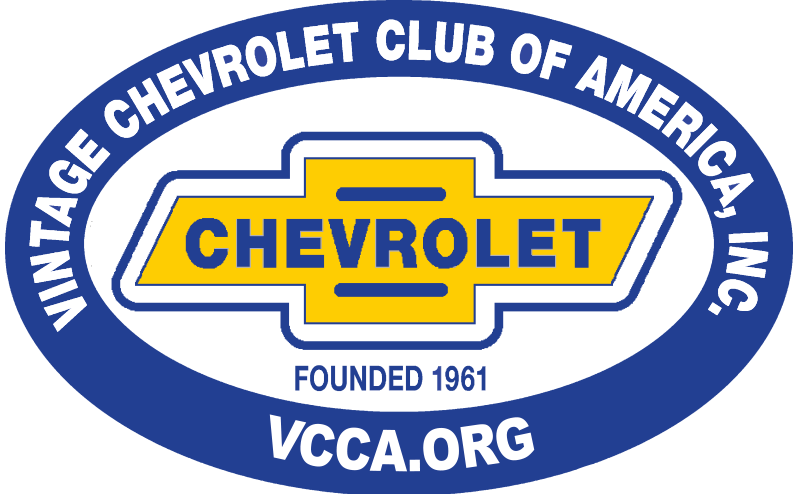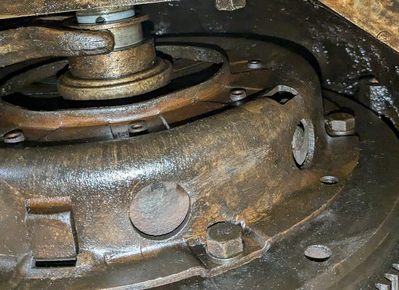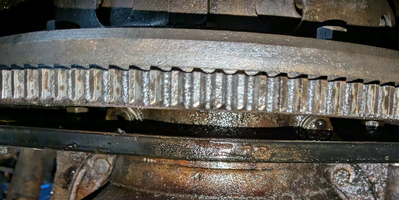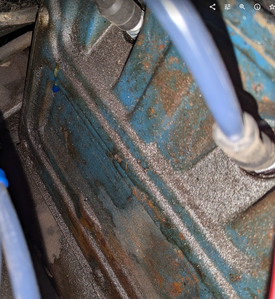1941 Master Deluxe, 216, 3 on tree waiting for AAA.
Drove an hour no issues. Turned around to head home and the clutch stuck to the floor. Oil is dripping from the place where the engine and transmission meet. Was full when I left and now down more than a quart and still leaking while waiting for the tow. Engine was running fine.
Am I right that my rear main seal may have gone and soaked the clutch? Any ideas? Was going 40 - 45 most of the trip. Wondering what I am in for.
Hilton, New York
1941 Chevrolet Master Deluxe
1987 Monte Carlo LS
2001 Chrysler Sebring Convertible
Got home last night. After about an hour and a half of sitting the clutch petal sprung back up. Still was real stiff and grinded near the engagement point. I was not brave enough to try and drive it at that point especially knowing a tow was coming. The tow came loaded it up and there was still oil dripping out of the back of the engine. It is home now. Tring to figure out what has gone wrong.
Hilton, New York
1941 Chevrolet Master Deluxe
1987 Monte Carlo LS
2001 Chrysler Sebring Convertible
From your description of the way the clutch was acting, I would guess the throw out bearing failed and the heat associated with the failure caused its inner race to bind on the input shaft bearing retainer of the transmission. When the parts cooled, the inner race was able to slide again, although not smoothly. Did you notice any noise from that area when you were driving? If you remove the tin inspection cover from the bottom of the bell housing you should be able to see the throw out bearing and the surface it slides on.
With regard to the oil consumption, in my experience a rear main leak failure is usually a more gradual failure If the rope seals spun in the block and lower main cap however, that may be a different story for which I have no experience. Have you checked the back side of the valve cover or push rod cover for the source of the leak? The leak may not be related to the clutch issue.
I hope someone comes along with a much more friendly diagnosis than mine.
Mike
Thanks for the reply. Today we got the car up in the air to have a look at what might be going on. We took the cover off of the bottom that covers the flywheel. It did have some oil in to but not as much as I would have thought if the rear main seat had failed completely. Is it possible the oil in this location could be from the oil pan gasket or the side cover and not the rear main seal? The fingers on the pressure plate where dry. The gasket around the oil pan did have oil on it but so did the passenger's side of the engine. As you stated it appears to be coming out of the bottom rear third of the side cover. Not sure how fast or how much could be lost through there in 25 miles. With the undercarriage being coated from there back to the tranny it is hard to tell if that is the only leak. Not sure if that is causing the oil pan to be wet or not.
If I have to change the throw out bearing should i replace the clutch, pressure plate etc. at the same time? I have never replaced a clutch before. It would seem it is not that much more labore to do it all. I saw the Filling Station has a kit for $199 that includes all of the parts.
Replacing the gasket on the side plate appears to require removing some items. It appears that I can get that out without removing the distributer, is that correct or wishful thinking?
Hilton, New York
1941 Chevrolet Master Deluxe
1987 Monte Carlo LS
2001 Chrysler Sebring Convertible
Another thing we noticed today was that the clutch pedal is moving without issue again after cooling overnight.
Hilton, New York
1941 Chevrolet Master Deluxe
1987 Monte Carlo LS
2001 Chrysler Sebring Convertible
Since it’s the middle of the driving season I’d focus on troubleshooting the clutch (throw out bearing) first. Have one of the boys exercise the clutch pedal while you observe the surface that the throw out bearing slides on. Is the surface smooth and in good condition. Is it discolored from heat? Since the clutch pedal is now free, start the car and listen for noise as you exercise the clutch. Is the free travel adjusted properly? With the pedal out, the bearing should not be in contact with the pressure plate fingers. Next, loosen the clutch linkage and remove the clutch fork. This should allow you to spin the throw out bearing. Is it loose, noisy, or signs of excessive heat. If so, bearing replacement is probably necessary requiring removal of the transmission. You’ll have to make a decision at this point. Do you go further and replace the clutch disc and pressure plate or just the throw out bearing? Usually when replacing the disc and pressure plate, the flywheel is removed and resurfaced by a machine shop. How did the clutch perform before the binding problem? Since you’re not paying someone to do the work, it might make sense to just do the bearing now and do the complete job during the winter if necessary. Needless to say, removing the transmission the second time should be easier. By the way, all of the parts are available locally, including the gasket kit for the transmission ball joint to torque tube connection. Be sure to follow the procedure in the shop manual when adjusting the ball joint with gaskets to keep it from leaking. Let me know if you need part numbers or a place to source.
With regard to replacing the push rod cover gasket, it is very difficult if not impossible to get a good seal without removing the distributor. I also know there are differing opinions, but I’ve never had any luck getting a good seal without using some sort rtv gasket sealant in addition to the gasket.
The clutch was working well prior to this incident. If just the throw out bearing may fix it I might go that way for now to get it on the road. We will need to look at it tonight. My son said he is able to easily slip a piece of paper up between the fingers and the bearing.
We had to do the torque tube ball gasket when we first placed the car on the road, so we have experience with that one.
Is there a good way to tell if the oil that is leaking from the side cover is the complete issue, if it is the oil pan or is it the rear main seal? Anything below the side cover has oil on it. Also for the amount this is driven yearly at what point is it worth fixing the rear main seal? I am asking because this is the one that worries me of all the issues that the car may have from the steps I have seem on YouTube and in the manual.
I have seen NAPA has the side cover, oil pan and valve cover gaskets. Were can the ball gasket be purchased locally. We ordered ours from the Filling Station last time.
Hilton, New York
1941 Chevrolet Master Deluxe
1987 Monte Carlo LS
2001 Chrysler Sebring Convertible
What is the white material above the release bearing in your pic? Looks like teflon. Clutch plate is ok if it has enough meat above the rivets and is not oil soaked.Photo does not show a drip off the bottom of the flywheel. Is the rear of the flywheel wet with oil?Your valve cover photo does not show a leak. I use black sponge draught excluder tape on my valve cover. I gave up using sealer on the stock gasket. Dont know how long the tape will last.Put some paper towel behind the pushrod cover where the gasket sits to see if you have a leak here while driving.When you install the pushrod cork Use a thick layer of silicone sealer on the block under the gasket to build up a dam . Put the cover on loosely without nuts to position the cork and let it dry overnight.The torque down the next day. There is a torque for those nuts dont overtighten by hand.
What is the white material above the release bearing in your pic?
That is the color on the shaft, not sure why it is that way. Not tape etc.
Valve cover is not leaking. It was leaking badly earlier. We changed that when we adjusted the valves and it has not leaked since.
The side rod cover is leaking out of the bottom of it.
Not positive, but I suspect the oil pan gasket is leaking. It could be from the rod cover above but at its age who knows.
Here is our plan going forward. The boys have the attitude of do it now, do it right. We have ordered the parts below parts and are planning the following:
- Fel Pro engine rebuild gasket kit. (Amazon had it for $58 with a Prime Day discount on Fel Pro gaskets, one of each gasket / seal is there.
- Torque tube seals
- Throw out bearing, If when we pull it all apart and find the clutch to be bad I will order that then. I plan to teach my two sons to drive this over the next two years so if there is life left in the current one better it than a new one to learn on.
Plan is to remove the carpet from the front of the car and the cover to access the tranny from above.
Disconnect the torque tube and then remove the transmission.
From here we will inspect the rear main seal and decide if it needs to be done. My sone wants to change the oil pan gasket at this point to.
Since the rod cover gasket does not need to be removed for any of the other work then we are going to wait on it until we have confirmed that the car is driving again.
Driving the car is one thing but not the only. This was built as a father son project. Old cars are just that, a continual project. We will fix it together.
Hilton, New York
1941 Chevrolet Master Deluxe
1987 Monte Carlo LS
2001 Chrysler Sebring Convertible
Watching YouTube it stated that the oakie bushing should be done when the transmission is pulled. Is this correct? Has anyone pulled the transmission without changing the bushing?
Hilton, New York
1941 Chevrolet Master Deluxe
1987 Monte Carlo LS
2001 Chrysler Sebring Convertible
Firstly I suggest you clean around the side plate thoroughly and dive it for a good few miles, this will show any leaks from there. I dont think there is a seal as such at the rear of the crankshaft on that model though I believe at engine rebuild that it can be modified to have a seal.
The oakie bush can be replaced without transmission removal (disconnect driveshaft and tube from trans and lower it for access instead of lift out of the road) but either way not an easy job without a hoist.
Tony
@timothy-kruger You only need to install a Oakie bushing if either the original bushing has failed OR the seal behind it has failed. The Oakie takes the place of both. You can remove the trans without touching the bushing. Good luck with yet another family learning experience.
Russell
@timothy-kruger You only need to install a Oakie bushing if either the original bushing has failed OR the seal behind it has failed. The Oakie takes the place of both. You can remove the trans without touching the bushing. Good luck with yet another family learning experience.
That is great news for the budget. Thanks.
Hilton, New York
1941 Chevrolet Master Deluxe
1987 Monte Carlo LS
2001 Chrysler Sebring Convertible
Just an update on where we are with this. Let the kids primarily take the lead. Their attitude is that every leak we see is fixed so that we do not have to do this again. Even if it means not driving it again this year. They say we still have the Monte Carlo on the road so we can use that for cursing around.
Everything is disconnected from the transmission at this point. The service manual said to use to transmission guide rods inserted into the top bolt holes to slide the transmission out on. We plan to make these out of some long bolts or threaded rod. Just have to get it. The u-joint looks like new. The tranny is leaking out of the points where the gear selectors go into it. Will need to replace those seals also while it is out.
Hilton, New York
1941 Chevrolet Master Deluxe
1987 Monte Carlo LS
2001 Chrysler Sebring Convertible
The advantage of a closed driveline is the U joint lasts virtually forever as long as it doesn't run dry. I bought a NOS spare for my 38 and I will likely never need it in my lifetime and probably my son's. It was available so I bought it as a "just in case" insurance policy.
7046 old site posts
Save a life, adopt a senior shelter pet
There are many good people. If you can't find one, be one.
1938 Master Business Coupe
1953 210 Sedan





